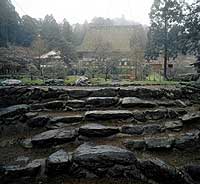
| Pseudonym reading | Shoboji |
|---|---|
| Specified type | Country designated / important cultural property |
| Type | Building |
| Designated date | September 11, 1990 |
| Specified details | |
| quantity | 3 buildings |
| location | Oishi City Mizusawa-ku Kuroishi Town Character Shohoji |
| owner | Shohoji |
| Holding group | |
| Management organization | |
| home page | Oshu City (Mizusawa Roman) Soto Temple |
Overview
One main hall, one main hall, one main hall, one additional bell tower, Shoho-ji is a temple of the Shodo sect located in the mountains about 10 km southeast of the Mizusawa ward in Oshu.
It is reported that the underworld good-bye that came out of Noto Sojiji Temple was reopened in 1348.
It has a temple that became independent from Sojiji as the main temple in Oubuni, and the Shosei Dojo, and in the Middle Ages, the temple prospered in response to the conversion of the local lords.
Since then, the Tokugawa shogunate government has become Sueji Temple of Souji-dera, and has reached the present, but it still gathers wide faith as the best temple in the Tohoku area.
Although the condition of the fortress at the time of foundation was not clear, several fires and fires were repeated in the Middle Ages, and according to the records, the names such as Buddha Hall, Hou, Pagoda, Great Hall, Gagedo, General Gate, etc. , It is known that the temple was formed around the Buddha.
During the Edo period, reconstruction and repair were carried out with the support of the Sendai lord Mr. Date, but the fire was destroyed by the fire of Kansei 11 (1799), and the Daimon gate (built in 1665) was built slightly. ) And Dozo, only the treasure house remained.
After the fire, at first, 4 years of culture (1807), the back of the house was rebuilt, and in 3 and 4 years of culture, the temple and the dormitory were rebuilt.
However, the reconstruction of the fort was extremely difficult, and by the 8th year of culture the temple (the present main hall), by the time of Kanaga 2 years (1849), a small, Kaizando was completed, but the other ended without being rebuilt.
